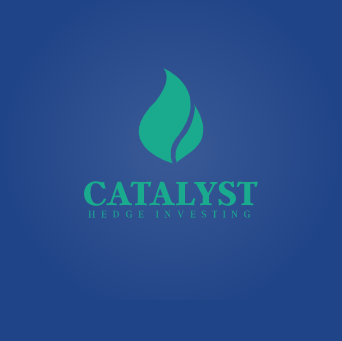Summary:
- 3M has announced a target date of April 1st for the spin-out of its healthcare division, Solventum.
- Solventum will have $8.319 billion of debt and $600 million of cash, with a balance sheet implying $2.2 billion of EBITDA and 3.5x leverage.
- The individual business lines at Solventum have shown limited sales growth, with wound care being the largest segment.
- Legacy 3M dividend is at risk even before considering the impact of future PFAS costs.
- One has to assume big multiples at both companies to justify the current stock price.
conceptualmotion
3M spin-out of Solventum:
3M (NYSE:MMM) filed a Form 10 announcing a target date of April 1st for its spin-out of its healthcare division Solventum (SOLV). A six-part $6.9 billion bond deal was just done to finance a dividend to be paid to 3M. Almost $4 billion of that dividend is spoken for this year assuming already agreed-upon liability settlements for combat arms and water utility pollution go through, which seems likely. The other $3 billion will have to be paid next year. Afterward, all future scheduled settlement payments will have to be satisfied with cash flows or increased borrowings. More on that later.
Basics of the Solventum Spin-out Structure:
3M will spin out 80.1% of SOLV shares to MMM holders. It will retain a 19.1% stake that it anticipates monetizing at a later date. SOLV will have $8.319 billion of debt and $600 million of cash, plus a $2 billion revolving credit facility. This balance sheet will leave the company with about 3.5 turns of leverage, implying $2.2 billion of EBITDA. There has been at least $1.6 billion of operating cash flow in each of the last three years and $1.4 billion of free cash flow last year, up 14% from 2022.
The company has not decided on a dividend policy yet.
Solventum Segment Detail:
There is finally some detail on the individual business lines at Solventum. None of them is particularly inspiring in terms of sales performance.
-
MedSurg: (56% of 2023 sales): provider of solutions including advanced wound care, I.V. site management, sterilization assurance, temperature management, surgical supplies, stethoscopes, and medical electrodes.
-
1.6% organic sales growth in 2023, 1% total growth, operating margin 23.9%.
-
2.7% organic sales growth in 2022, -1% total growth, operating margin 23.1%.
-
6.5% organic sales growth in 2021, 8% total growth, operating margin 26.5%.
-
-
Dental Solutions: (16% of 2023 sales): dental and orthodontic products including brackets, aligners, restorative cements, and bonding agents.
-
1.6% organic sales growth in 2023, 0.2% total, operating margin 33.3%.
-
-0.1% organic sales growth in 2022, -4.9% total, operating margin 32.9%.
-
30.4% organic sales growth in 2021, +33% total, operating margin 34.5%.
-
-
Health Info Systems: (16% of 2023 sales): provides healthcare systems with software solutions – including computer-assisted physician documentation, direct-to-bill and coding automation, classification methodologies, speech recognition, and data visualization platforms.
-
4.7% organic 2023 sales growth, 4.7% total, 32.9% operating margin.
-
6.6% organic 2022 sales growth, 5.8% total, 29.3% operating margin.
-
7.9% organic 2021 sales growth, 8.3% total, 30.5% operating margin.
-
-
Purification and Filtration: (12% of 2023 sales): provider of purification and filtration technologies including filters, purifiers, cartridges, and membranes.
-
-3.6% organic 2023 sales growth, -4% total, 17% operating margin.
-
7.1% organic 2022 sales growth, 0.8% total, 17.9% operating margin.
-
10.7% organic 2021 sales growth, 12.9% total, 23.3% operating margin.
-
As one can see, none of these businesses has had more than 5% organic growth except for 2021 which was a COVID-19 rebound year. While the sectors are large, none are experiencing rapid growth either.
- MedSurg addressable market: ~$26bn with estimated 2024-2026 annual market growth of 3-5%.
- Dental Solutions addressable market: ~$17bn with estimated 2024-2026 annual market growth of 4-6%.
- Health Information Systems addressable market: ~$9bn with estimated 2024-2026 annual market growth of 6-8%.
- Purification and Filtration addressable market: ~$41bn with estimated 2024-2026 annual market growth of 4-6%.
I wouldn’t expect the company to take much market share either. Market share in these industries is usually very sticky and only moves with large product recalls or massive innovation. As I have written before, MMM has had difficulty innovating for years. That’s likely why its segments are growing slower than their industries. Perhaps being freed from the MMM corporate yoke will lead to increased innovation, but that’s a “show me” story and wouldn’t happen right away.
Valuation:
We will see where this trades. The market will decide based on comps. MedSurg’s comps are Smith & Nephew (SNN), Becton, Dickinson and Company (BDX), ICU Medical (ICUI), Steris (STE), and others. Dental competes with Dentsply (XRAY), Envista (NVST), and others, perhaps Henry Schein (HSIC). Health Information competes with R1 RCM (RCM), Athena, Ensemble, and other large software companies. Purification doesn’t have any great pure comps as most are part of larger businesses.
The MedSurg comps trade between 10 and 15x EBITDA, but nearly all are growing faster. Dental and Health solutions are usually 8-12x EBITDA businesses. Again, most are growing faster than SOLV’s segments (which isn’t saying much).
The company said it expects SOLV to be an acquirer. With 3.5x initial leverage, it will have to be judicious with the prices it pays for anything. They’ll also be competing against established companies in the space. An acquisition bent and 3.5x leverage implies that the company will likely not be paying a big dividend initially, certainly nowhere near MMM’s 6% dividend.
Based on comps, where SOLV lies relative to them, its lack of growth, and its leverage, I believe that SOLV will trade around 11x EBITDA. I’d be quite surprised if it traded materially better. 11x $2.2 billion of EBITDA yields a $24.2 billion enterprise value (not counting added costs of operating a standalone public company that I estimate at around $100 million at a minimum). The leverage implies 7.5x of equity or a $16.5 billion market cap. If you penalize the company for the $100 million added cost you take about 1.1 billion off that market cap.
Impact on MMM:
There are a lot of impacts on 3M here. For starters, $1.4 billion off free cash impacts MMM’s ability to pay its dividend, particularly given the known settlement payments it will have to satisfy. As I said above, the $7.7 billion dividend from SOLV is spoken for in the next two years. Ex-working capital, 3M usually generates about $5-5.5 billion of free cash before the dividend. Once the $7.7 billion from SOLV is paid out, the company will have to fund $1.5 to $3.5 billion of payments for 2026 through 2028 just from settlements already agreed to. There are more pending lawsuits from PFAS and I expect a lot more settlements.
However, not even counting the settlement payments, if SOLV is $1.4 billion of MMM’s free cash, covering the $3.3 billion gets very tight using the $5 billion pre-spin off free cash flow number ($5 billion – $1.4 billion = $3.6 billion). Moreover, given SOLV is MMM’s BEST performing business in terms of organic sales, there could be declines in free cash going forward if last year’s 3.2% organic sales decline repeats. The company has guided to 0 to 2% organic sales growth. I’ll believe that when I see it. It also guided to $6.5 to 7 billion of operating cash flows (with SOLV included). I do not know how much of that cash is working capital, but one has removed both SOLV’s $1.4 billion and another ~$1.4 billion for capital expenditure. Again, that makes covering the $3.3 billion dividend tight.
On valuation, if one values SOLV at 11x $2.2 billion of EBITDA and the other three businesses throw off about $5.8 billion, one has to assign very healthy multiples to those remaining businesses just to hit 3M’s current valuation. I do not believe either business warrants such a high multiple.
| Current 3M Valuation ($8 billion EBITDA) | $78 billion | 9.75x |
| Pro-Forma SOLV Valuations ($2.2 billion EBITDA) | $24.2 billion | 11x |
| Remainco Valuation ($5.8 billion EBITDA) | $53.8 billion | 9.25x |
I have not made any adjustments to cash movements and leverage since that will just confuse things at this stage. Also, I included $16 billion of settlement costs into 3M’s current EV, as that is likely a certain liability (and one that can grow significantly given how the settlements are structured as I’ve explained previously).
Call me crazy, but 9.25x EBITDA for a business whose three segments are either not growing much or shrinking (more likely) and facing added liabilities from PFAS strikes me as too high a multiple. Given a current $51 billion market cap, every multiple reduction of $5.8 billion EBITDA hits 3M’s stock price by a little over 11% or a little over $10/share. That makes 3M’s current stock worth just over $70.
Risks:
One can choose what to do with SOLV post spin. My sense is that it won’t trade great. I think that makes shorting 3M here easier. A risk to the short obviously is SOLV trading at a higher multiple than 11x. Another risk is remainco trading better than 9x. I think that is unlikely, particularly if the dividend gets cut, but anything is possible. Another risk is a major recovery of sales growth or margin expansion at either SOLV or remainco. Lastly, the company could have some good news on its PFAS exposure via settlements. I think that is unlikely but again, anything is possible.
Conclusion:
I have liked 3M as a short for a year now. I still don’t understand how this spin is actually happening given all of the swirling PFAS liabilities, but it’s happening. I think there is a risk the dividend gets cut, although I have seen numerous examples of companies damaging their balance sheets to protect dividends. As such, 3M bonds are a lay up short in my opinion, but I like the stock as a short as well.
Analyst’s Disclosure: I/we have a beneficial short position in the shares of MMM either through stock ownership, options, or other derivatives. I wrote this article myself, and it expresses my own opinions. I am not receiving compensation for it (other than from Seeking Alpha). I have no business relationship with any company whose stock is mentioned in this article.
Seeking Alpha’s Disclosure: Past performance is no guarantee of future results. No recommendation or advice is being given as to whether any investment is suitable for a particular investor. Any views or opinions expressed above may not reflect those of Seeking Alpha as a whole. Seeking Alpha is not a licensed securities dealer, broker or US investment adviser or investment bank. Our analysts are third party authors that include both professional investors and individual investors who may not be licensed or certified by any institute or regulatory body.
My new investment group, Catalyst Hedge Investing, is live. The launch has been terrific. The chat board is live and active as is the best ideas portfolio. There are still generous introductory prices for early subscribers that will continue for the life of your subscription. Come join the fun!

